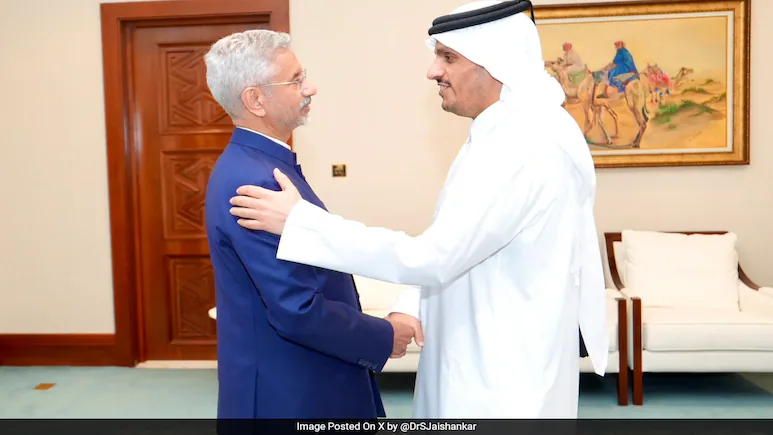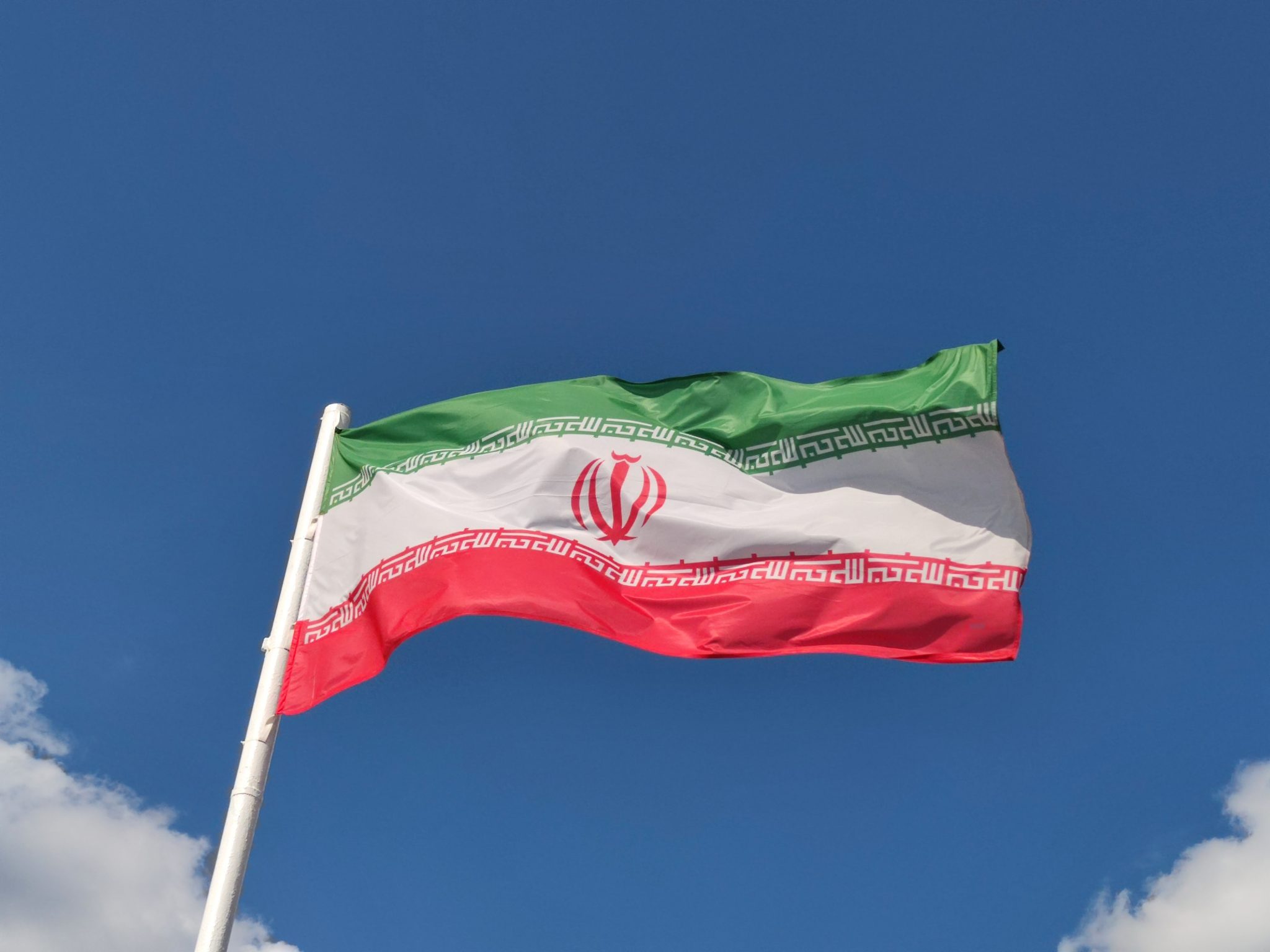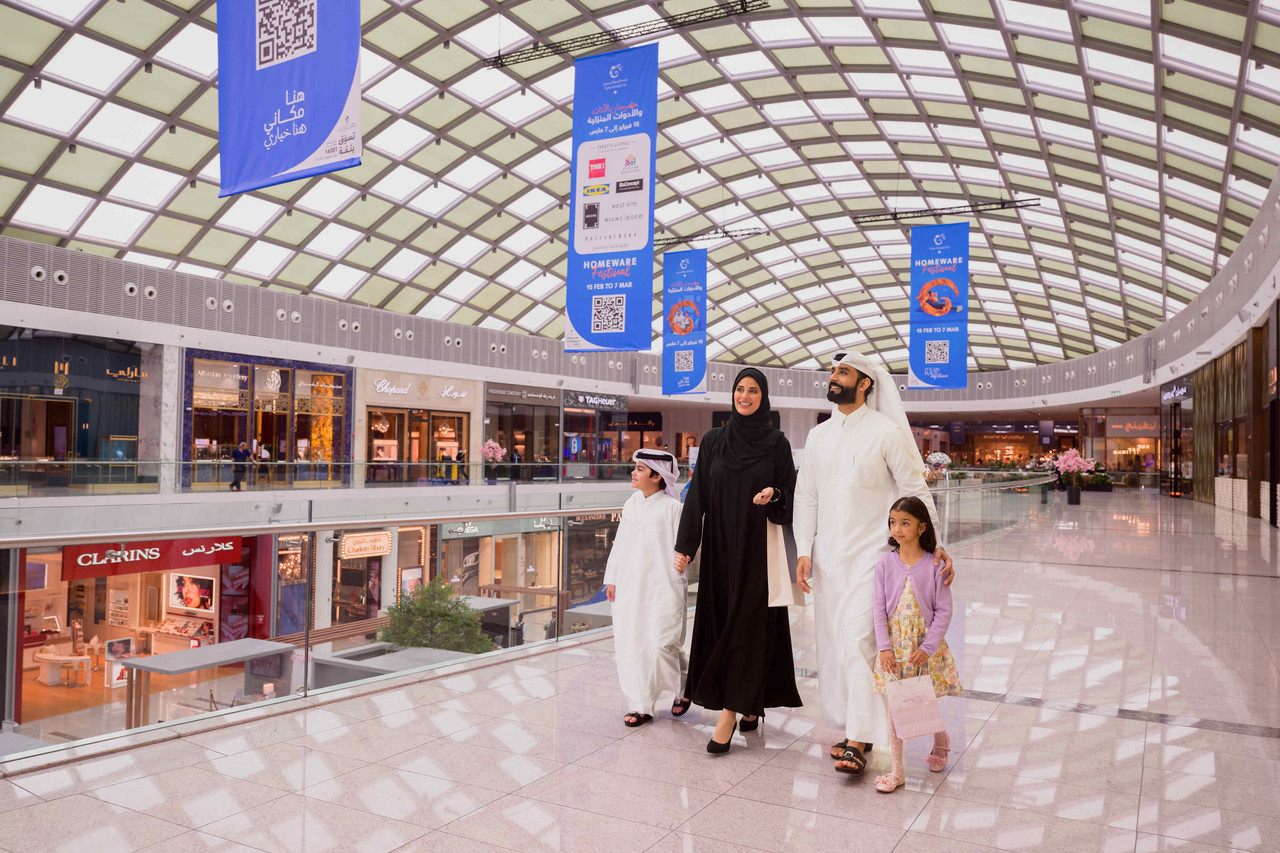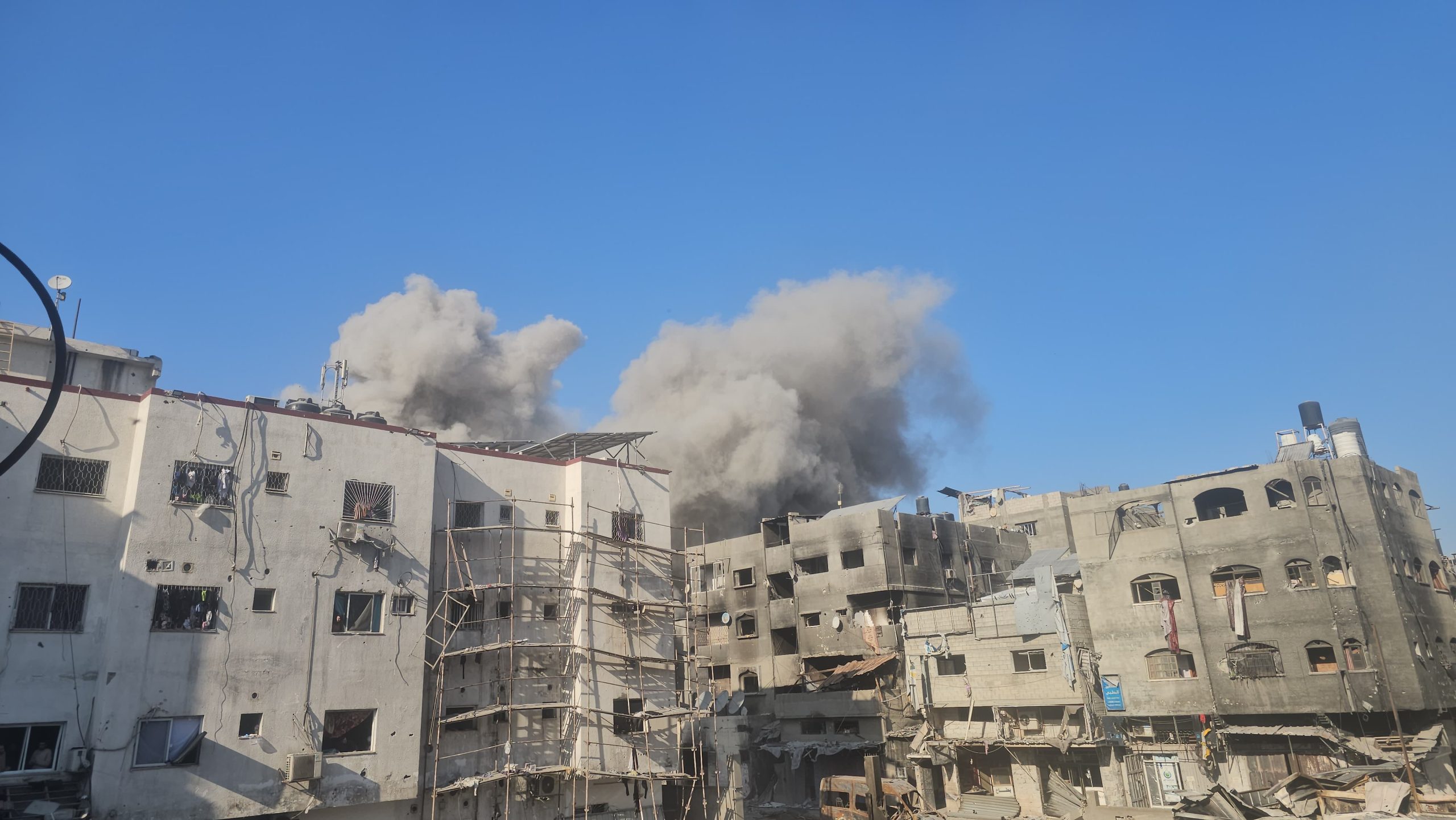Qatar has finally received the travelling exhibition “Labour of Love: Palestinian Embroidery as a Historical Document“
History books and family registers usually tell the story of an individual. However, for Palestinian women, these stories are often documented and shared through embroidery.
That is exactly what Qatar Museums’ latest exhibition, a collaboration with the Palestinian Museum called “Labour of Love: Palestinian Embroidery as a Historical Document,” shows visitors.
It decodes tatreez symbols, explores its meanings, and analyses how it has evolved and kept up with the different stages of Palestinian life.
As part of Qatar-MENASA 2022 Year of Culture, the event is also being held to celebrate Qatar Creates, a year-long programme for promoting regional culture and the arts.
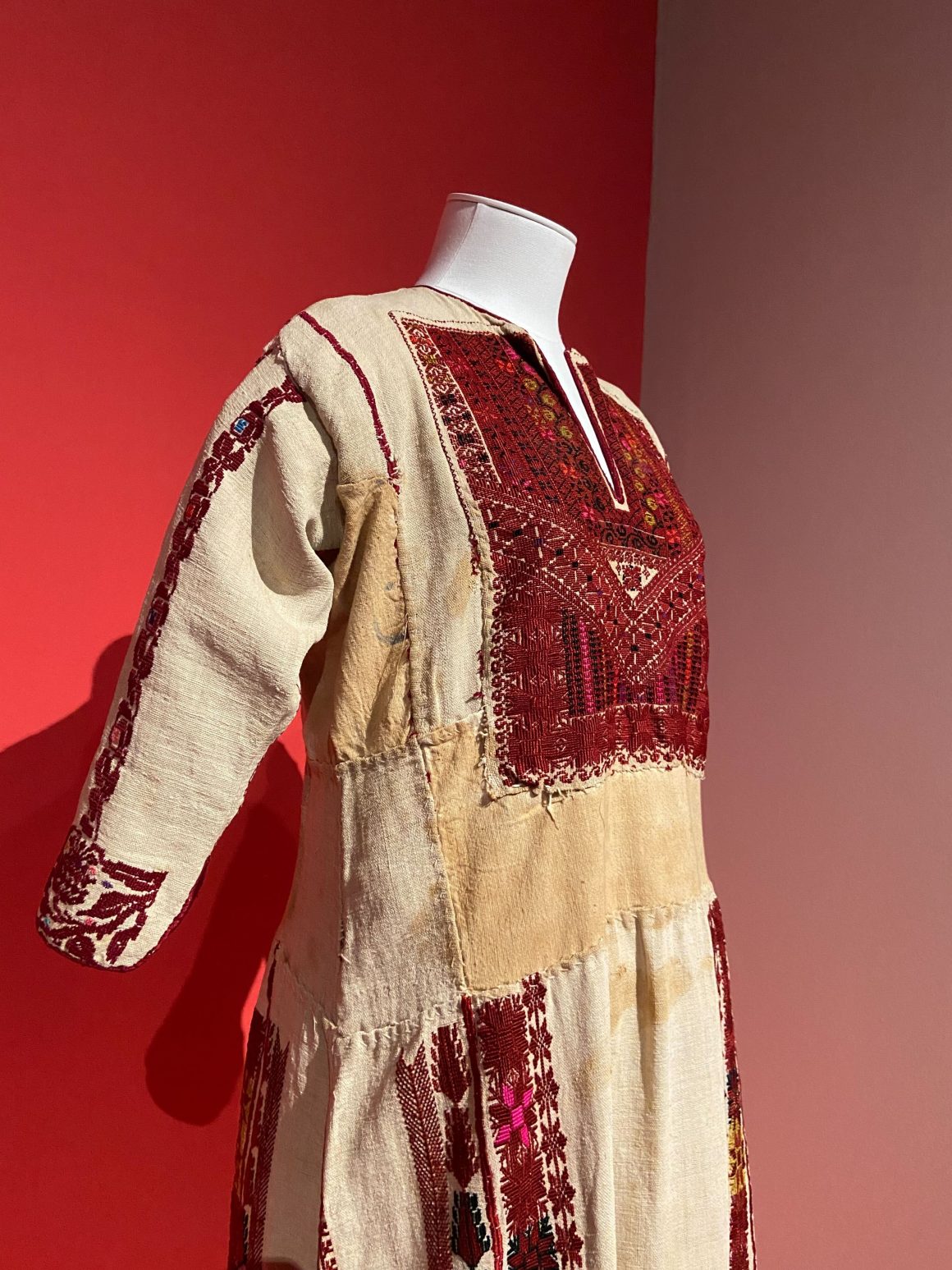
Palestinian embroidery has a long history of serving as a significant form of resistance to Israel’s ongoing unlawful occupation of Palestine, beyond its vivid colours and distinctive patterns.
For example, the pictured dress, displayed in the exhibition, is called the ‘Nakba thobe.’
“The thobe was given by a woman from Ramallah to a Palestinian refugee in 1948. The refugee did not have any fabric or money to buy some, and needed to lengthen the dress to fit her,” Baha Jubeh, the Collections & Conservation Manager at the Palestinian Museum, told Doha News.
“She used one of the flour bags give to refugees by the UNRWA to patch it up so she’d be able to wear it,” Jubeh added.
“You can even see the letter ‘n’ from the word ‘taheen’ [flour in arabic] on the dress. This carries all the meaning of the Nakba,” Jubeh, added.
The intricate patterns continue to be used at every opportunity, and the art successfully conveys stories, embodies Palestinian heritage, and inspires many people all over the world, especially Palestinians.
In order to read Palestinian social, political, and economic history from the late Ottoman era to the present, the exhibition uses tatreez as a tool.
By highlighting the nuanced aspects of tatreez’s practise, applications, and meanings as well as its reflections of Palestinians’ daily lives, it seeks to illuminate tatreez beyond its stereotyping.
This exhibit was inspired by Rachel Dedman’s “At the Seams: A Political History of Palestinian Embroidery” exhibition, which she organised in Beirut in 2016.
The exhibition was then renamed “Labour of Love” and debuted in Palestine at the Palestinian Museum in Birzeit after the curator’s research had been expanded.
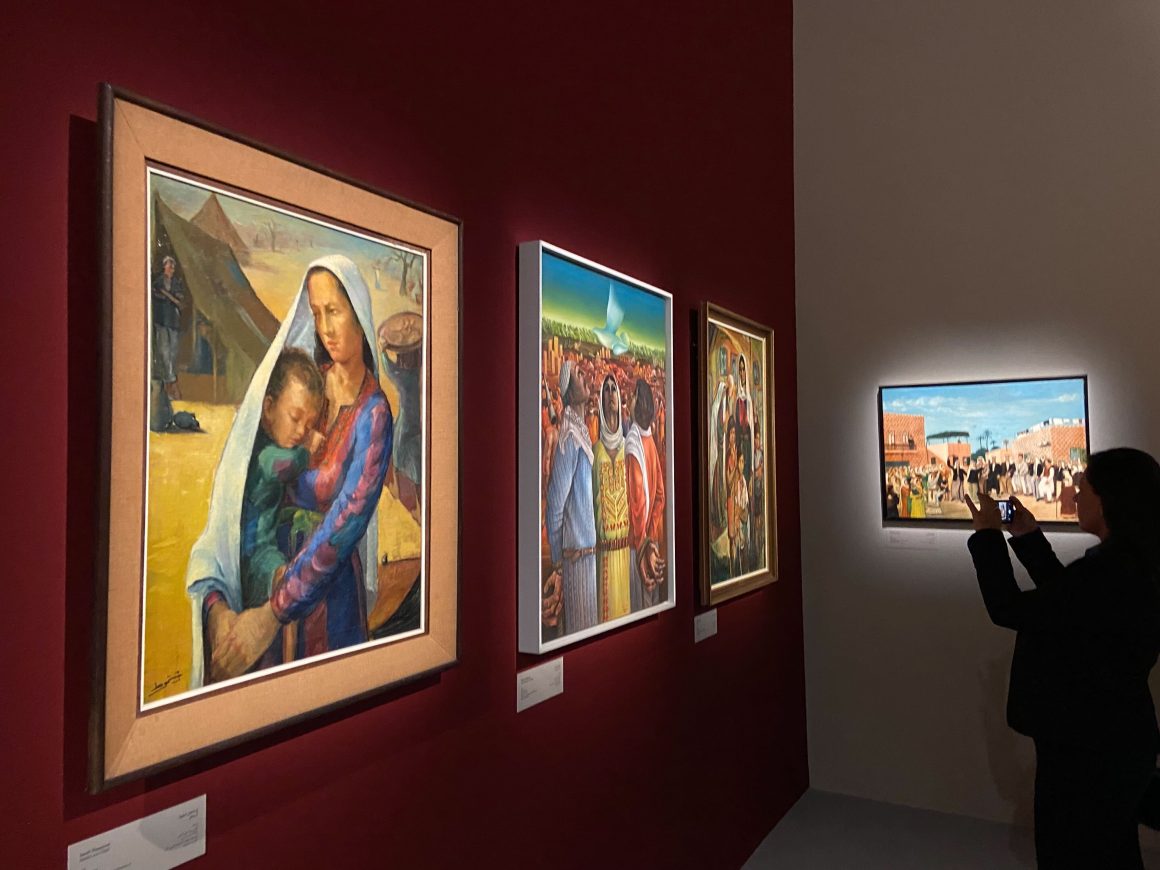
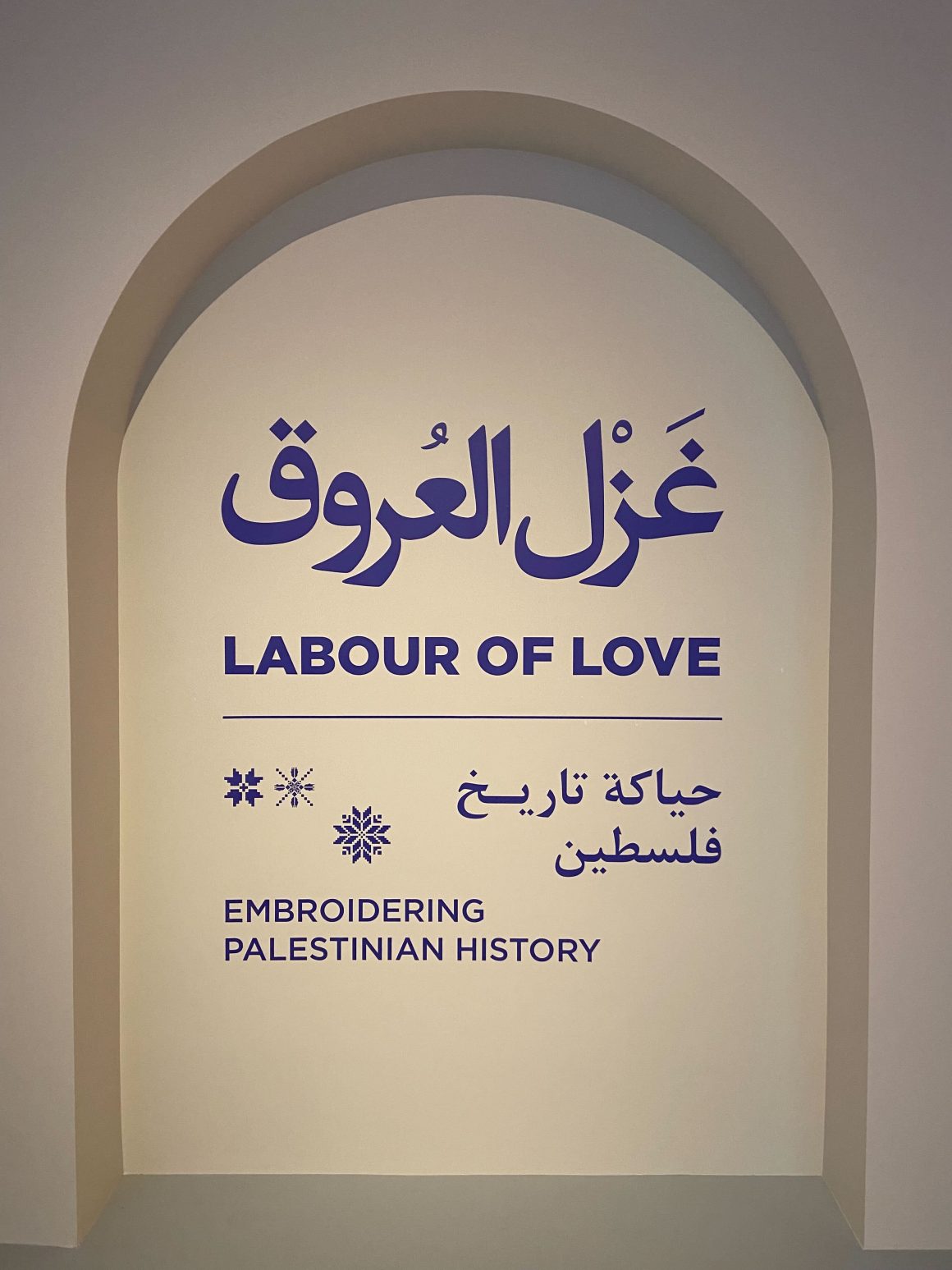
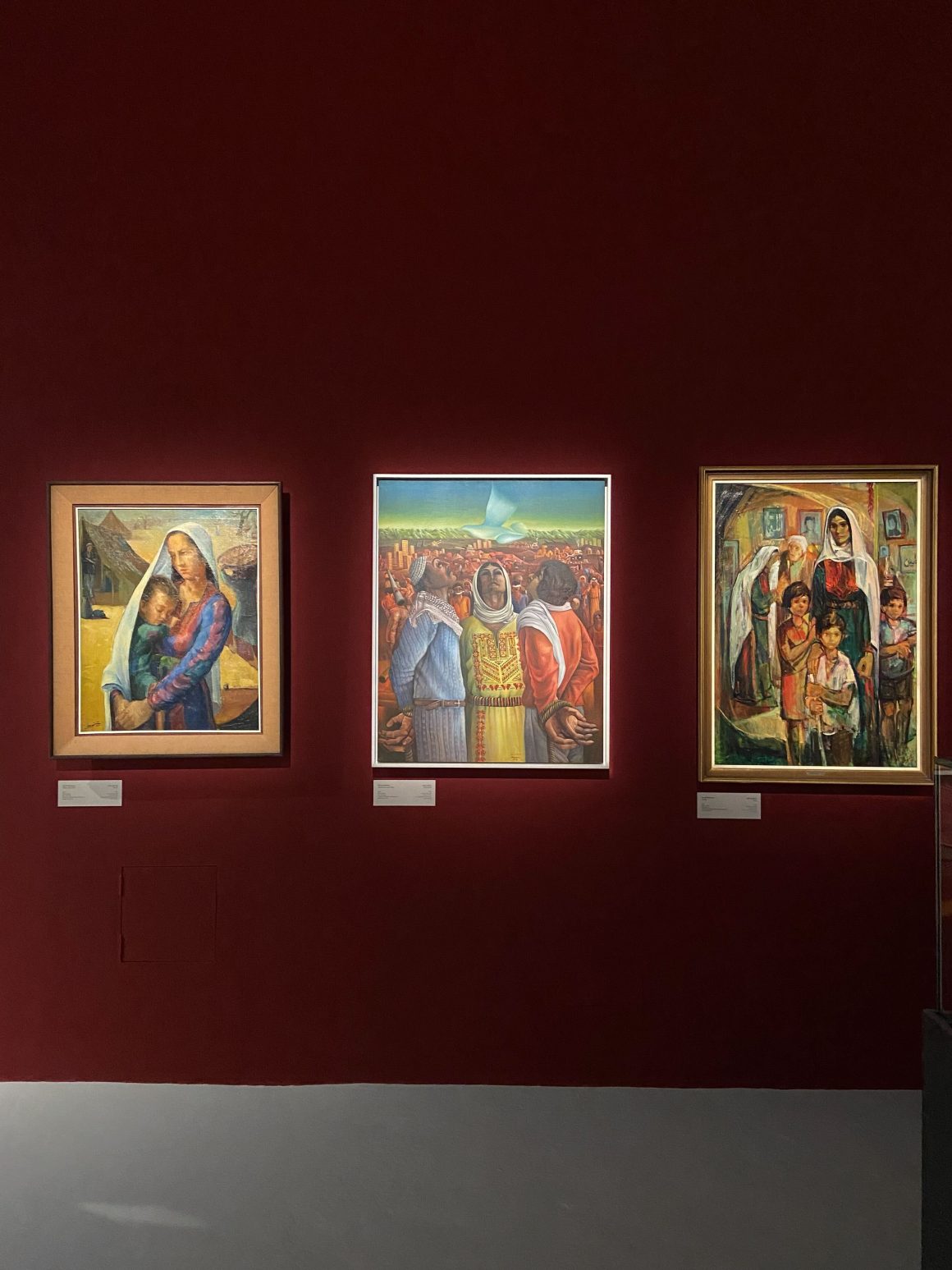


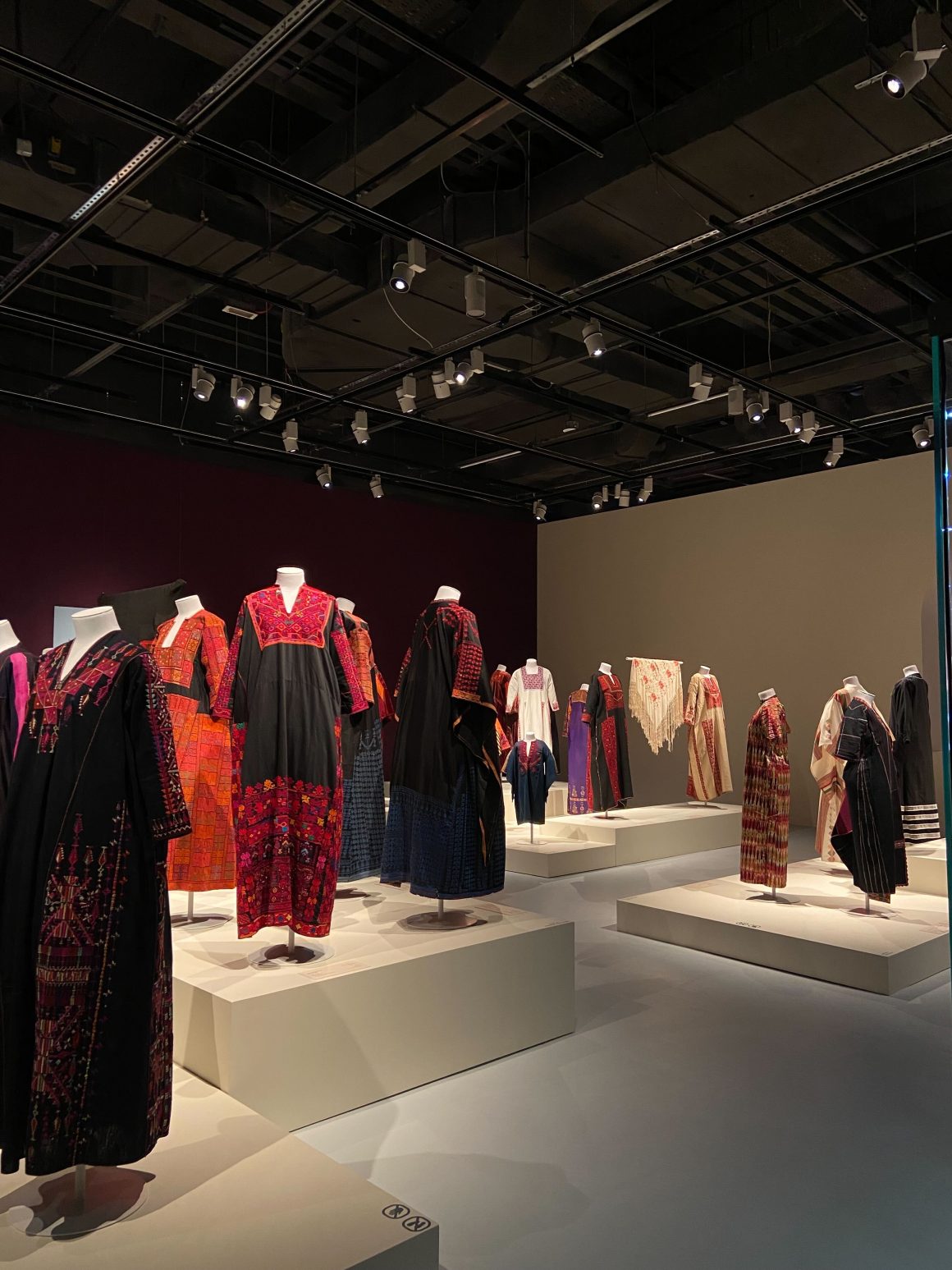
This version of the exhibition provides a broader perspective, sparks deeper debate, and helps people gain a better understanding of the settings in which embroidery is produced and how it relates to everyday life.
By emphasising its sentimental value and significant legacy, this narrative carries meanings and symbols that transcend politics, nostalgia, and the aesthetics of heritage.
The exhibition also offers a close look at the history of folkloric beliefs that have influenced Palestinian fashion’s distinctive identity within its Arab context.
The art of Palestinian embroidery has existed for more than 3,000 years and continues to exist despite the ongoing Israeli occupation of Palestine, as well as its ethnic cleansing of Palestinians for more than 70 years.
Each stitch reflects a different part of Palestine and each string delicately embroidered into the fabrics narrates a story.
Tickets for the exhibition, which is on show until 28 January 2023, can be purchased online through Qatar Museums.
It is open from Saturday until Thursday from 9am to 7pm, and from 1pm to 7pm on Friday.


